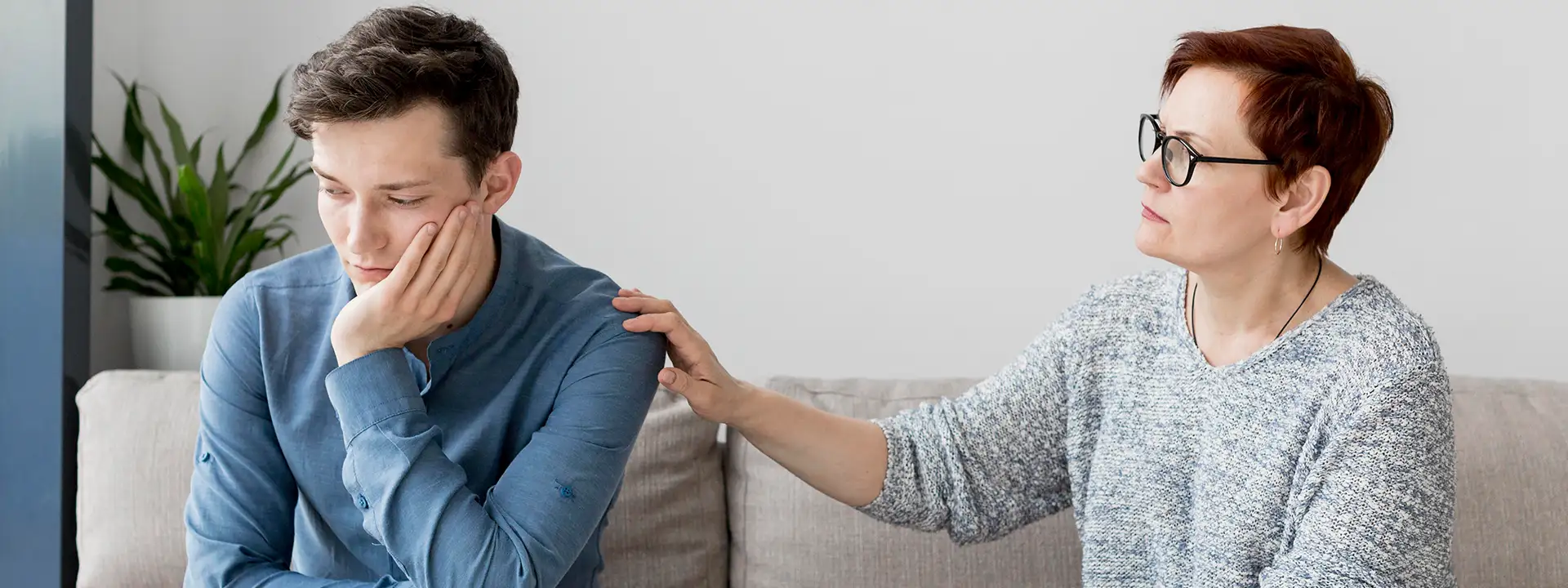The sun was soft that morning. Waves tapped on the shore. Everything felt calm. I held my coffee and listened to my partner laugh. At that moment, life felt safe. She smiled at me like I was the best person in the world. Have you ever felt that—like someone truly saw you and loved you?
But only a few hours later, it all changed. I made one small comment. Her face turned hard. Her words cut deep. Suddenly, I was no longer safe to her. I was the enemy. By dinner, the same person who loved me at breakfast told me I had ruined everything.
How can someone switch so fast?
That is what people call BPD splitting. It happens when someone with borderline personality disorder (BPD) sees people as all good or all bad—and can switch between the two quickly.
Let’s walk through this together. Let’s ask real questions, look at real science, and find ways to heal.
Why Do People With BPD Split?
Splitting is a confusing part of BPD. It happens when feelings get too big and painful. The brain looks for a quick answer: “Is this person safe or not?”
In my story, my partner didn’t plan to switch. She laughed with me. She hugged me. She meant her sweet words. But later, one small comment made her feel rejected. Her brain jumped into protection mode. Instead of holding both truths—“he loves me” and “he upset me”—her mind picked one: “he doesn’t care at all.”
This switch is not about drama. It’s about fear. Many people with BPD grew up where love felt unsafe or could vanish at any moment. Splitting is the brain’s way of guarding against that pain, even if it looks confusing.
A 2025 study by Li and his team looked at more than 5,900 therapy sessions with 456 people. Before each session, clients filled out a short feelings survey. When therapists checked it right away, clients got better faster by the very next meeting. But when they did not look at the survey until later, progress was slower. It shows that paying attention to strong feelings right away helps people find balance. And balance is the opposite of splitting.
Have you ever seen someone switch like this and thought, “Where did the real person go?” What if both sides were real—and with help, people can learn to hold the good and the bad at the same time?
How Does BPD Splitting Affect Relationships?
Living with BPD splitting can feel like walking on a shaky bridge. Some mornings, your partner says you’re the best person they know. By evening, they might call you cruel or heartless.
In my story, I felt like I had to prove myself over and over. I tried not to say the “wrong” thing. But splitting still came. Trust started to break. I began to wonder: “Am I the bad person she says I am? Or the hero she saw this morning?”
Splitting leaves partners confused, scared, and tired. Friendships fade. Families stop talking. And the person with BPD often feels ashamed later, wishing they could take back their words.
But here’s the good news: Mentalization-Based Therapy (MBT) helps. A recent study by Sophie Juul and her team (2025) compared short-term MBT (5 months) with longer MBT (14 months). Both groups improved in how they saw themselves and others. It means even a short MBT plan can help people with BPD build healthier relationships.
Think of this: instead of shouting, “You always ruin everything,” a partner pauses and says, “I feel hurt right now, but I know you love me.” That’s the power of MBT.
Do you know what it feels like to love someone but also feel like you’re walking on eggshells? Can you imagine what life would feel like if that shaky bridge finally held steady?
What Triggers BPD Splitting Episodes?
So, what sets off splitting? Often, triggers can vary from tiny rejections to big arguments.
Triggers can include:
- A delayed text reply.
- A sudden change in plans.
- A sigh, a frown, or looking away during a talk.
- Words that sound harmless but feel like criticism.
When a brain wired for fear of being left behind sees these things, it sends a loud alarm: “You’re being rejected.” That’s when splitting starts.
Daiki Tanaka and team (2025) studied 500 adults in Japan. They found that people who felt extra sensitive to rejection also showed more borderline traits. The stronger the rejection sensitivity, the more likely BPD-like patterns were to show up. It explains why a late text or a frown can spark such a big reaction.
Knowing this helps. A friend might think, “They’re overreacting.” But the person is responding to deep fear. If partners gently say, “When you looked away, I thought you were upset—what’s true?” it can stop the spiral.
Have you ever fought over something small and thought, “Why did this blow up so big?” Maybe the trigger wasn’t the real problem. The fear was.
How to Manage BPD Splitting Behavior
So, what can you do when splitting shows up? Can you manage it at home?
In our story, we made something called a “split kit.” It’s like a feelings toolbox. It had three questions:
- What else could be true?
- What would future-me thank present-me for?
- What does my body need right now—rest, water, or a walk?
Before my partner sent a hurt text, she would stop and ask these. That pause gave her a chance to choose better.
Therapy helps, too. Dialectical Behavior Therapy (DBT) teaches skills to calm your body, think clearly, and act in new ways. Alter Behavioral Health explains that DBT teaches mindfulness, emotion control, and healthy ways to ask for connection. These skills help people manage splitting right in the moment.
So, let’s ask: What if, the next time your brain shouted “all bad,” you paused and asked, “Could this be something else?” Could that moment save you from a fight? Could it bring healing instead?
Why Is Splitting Common in BPD?
Splitting is common in BPD because people often feel strong emotions, identity struggles, and fear of being left. When feelings grow too big, the brain takes a shortcut: all good or all bad.
In my partner’s life, when she felt lonely, splitting came faster. If she felt safe, she could hold onto the good—even during fights. But when loneliness crept in, even small hurts felt like proof that I didn’t care.
New tools are helping now. A 2025 study tried a digital therapy app called Priovi, built on schema therapy. People used it along with their regular treatment. After three months, those using the app had fewer BPD symptoms and even fewer suicide attempts than people with therapy alone. It shows that help can live in your pocket, not just in a clinic.
If you could use an app that reminded you of your worth during a hard moment, would you try it? What if that small reminder saved your whole day?
Love Needs More Than Willpower
If you’ve seen yourself or someone you love in this story, know this: you are the only one experiencing it. BPD splitting is not hopeless. It’s a sign pointing to care, compassion, and treatment.
At Alter Behavioral Health, we understand these storms. We offer safe spaces and proven therapies like DBT, MBT, and trauma care. We know how to help such individuals find a steady life.
So, are you ready to take a step? Call Alter Behavioral Health at (866) 248-9285 or visit our website. Healing starts with one brave choice.
FAQs
What is BPD splitting in simple terms?
It means seeing someone as all good or all bad, very fast.
Why do people with BPD split?
They split to protect themselves from the fear of rejection.
How does BPD splitting affect relationships?
It breaks trust and causes ups and downs.
What triggers splitting episodes?
Late replies, plan changes, or signs of rejection.
How long do splitting episodes last?
Minutes, hours, or even days.
Can splitting be managed?
Yes, with therapy, DBT skills, and calming routines.
What causes splitting in BPD?
Trauma, fear, and a sensitive brain.
Why is splitting common in BPD?
Because strong emotions and fear of being left are at the core of BPD.
Do people split on purpose?
No. It’s not a choice. It’s automatic.
Where can I find help for BPD splitting?
You can get expert care at Alter Behavioral Health.



